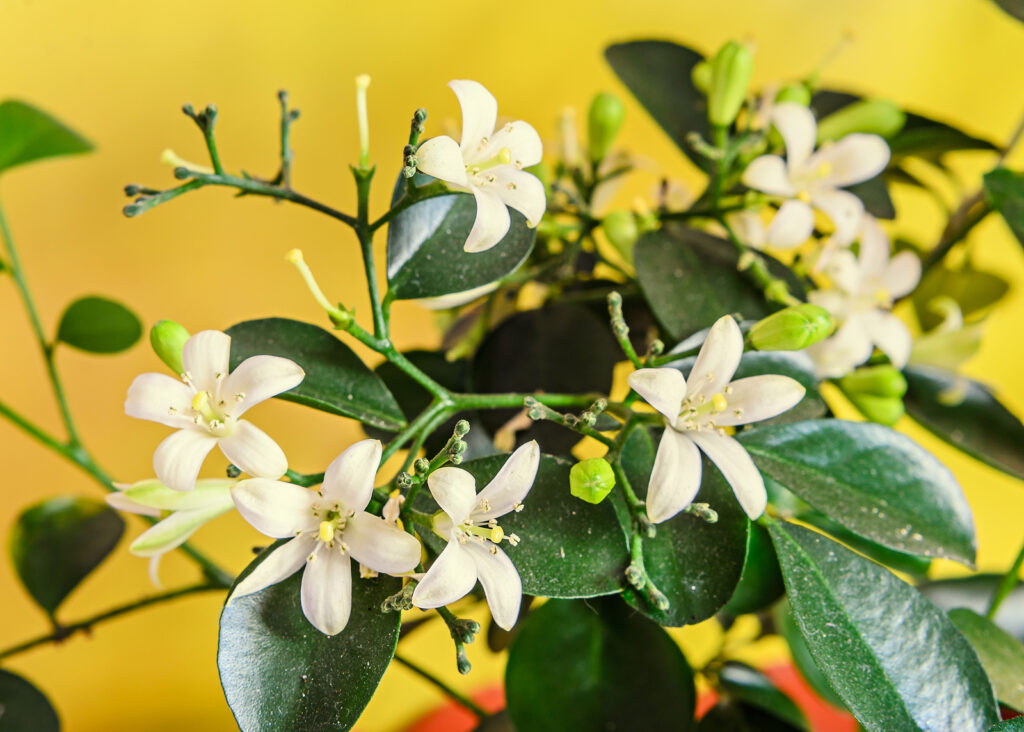Murraya–commonly called Orange jasmine–is a subtropical small shrub. It can be trained as a houseplant or bonsai. Its waxy, white, bell-shaped blossoms smell like orange blossoms.
Murraya has graceful, pendulous branches. Where winters are mild Murraya can be planted in hedges or as foundation plants. It can be grown as a small single- or multitrunked tree. It adapts well to training as a topiary or bonsai.
Get to know Murraya
- Plant type: Evergreen shrub
- Growing Zones and range: Subtropical
- Hardiness: Tender, best in warm conditions at least 60°F (16°C)
- Height and width: 6 to 15 feet (1.8-4.5m) tall and wide; grown as a small single- or multitrunked trees; can be grown as a houseplant with early pruning.
- Growth rate: Fast
- Form and habit: Open habit, graceful branches
- Foliage: Small, dark green, glossy leaves divided into three to nine oval leaflets
- Flowers: Waxy white, bell-shaped blossoms with orange blossom fragrance; small red fruits follow flowers
- Bloom time: Late summer and fall, sometimes in spring
- Uses: Houseplant; in warm-winter regions can use as hedge, filler, or foundation plant
- Common name: Orange jasmine, Chinese box
- Botanical name: Murraya paniculata
- Family: Rutaceae
- Origin: China and Southeast Asia

Where to plant Murraya
- Plant Murraya in filtered light.
- Murraya grows best in humus-rich soil; use all-purpose potting mix for container growing
When to Murraya
- Set Murraya outdoors in warm weather.
Planting and spacing Murraya
- Space Murraya 6 to 15 feet (1.8-4.5m) apart when planted in a hedge or as a specimen.
How to water and feed Murraya
- Keep the soil evenly moist for Murraya.
- Fertilize Murraya twice a month with an all-purpose fertilizer.
Murraya care
- Clip Murraya as desired to shape the plant; adapts well to clipping can be trained as a topiary or bonsai.
Murraya varieties to grow
- Murraya exotica is a dwarf variety well-suited as a houseplant, blooms are less profuse.















